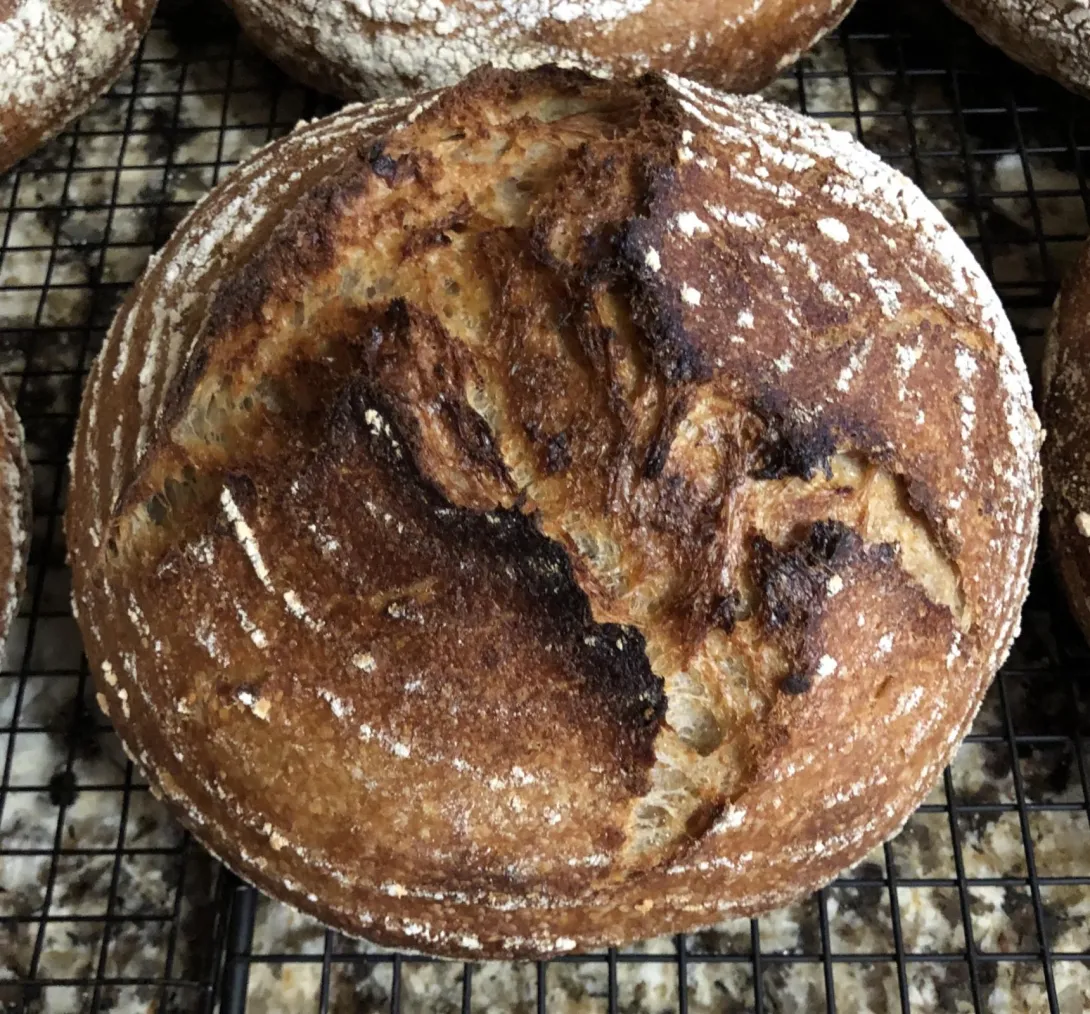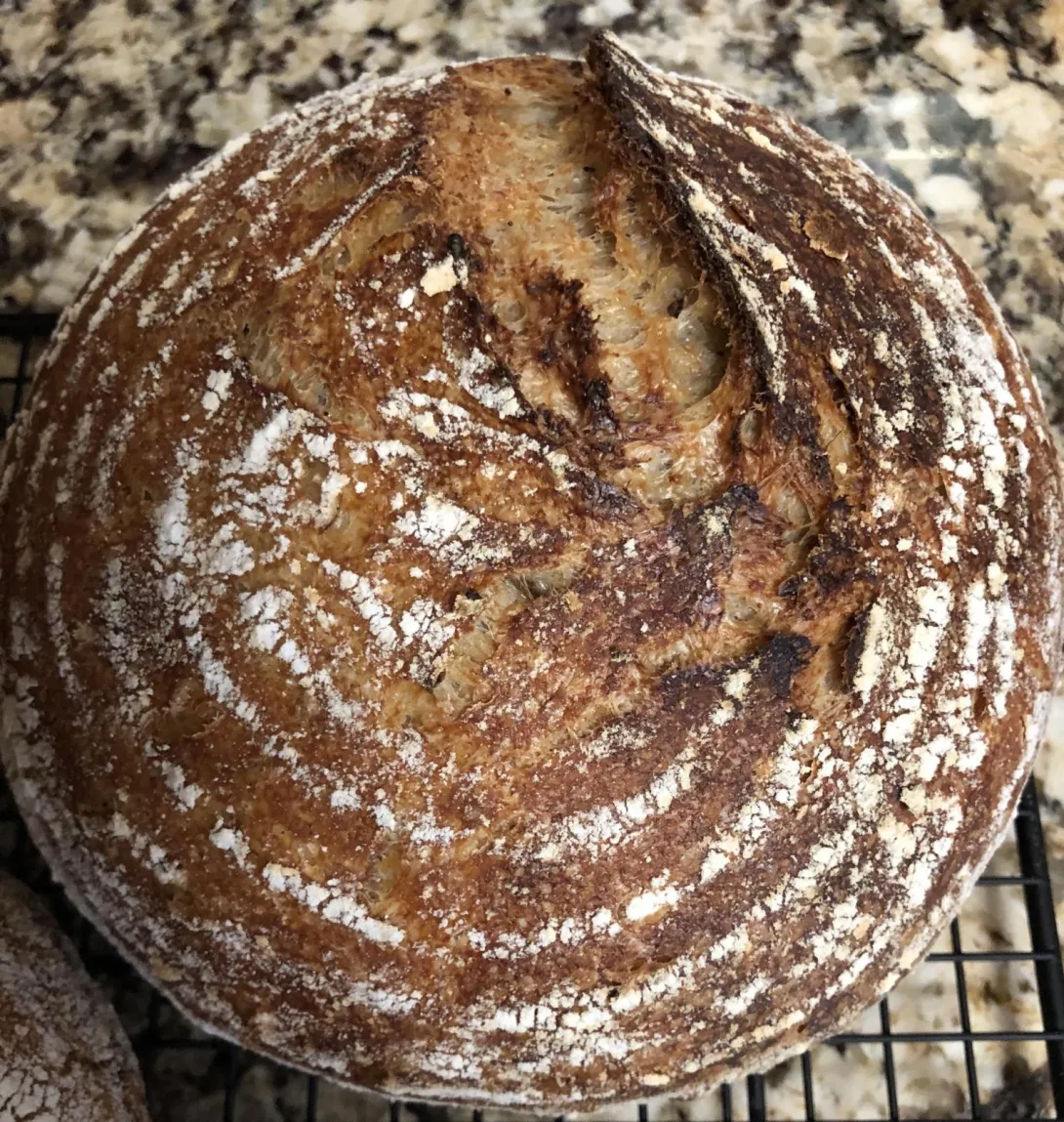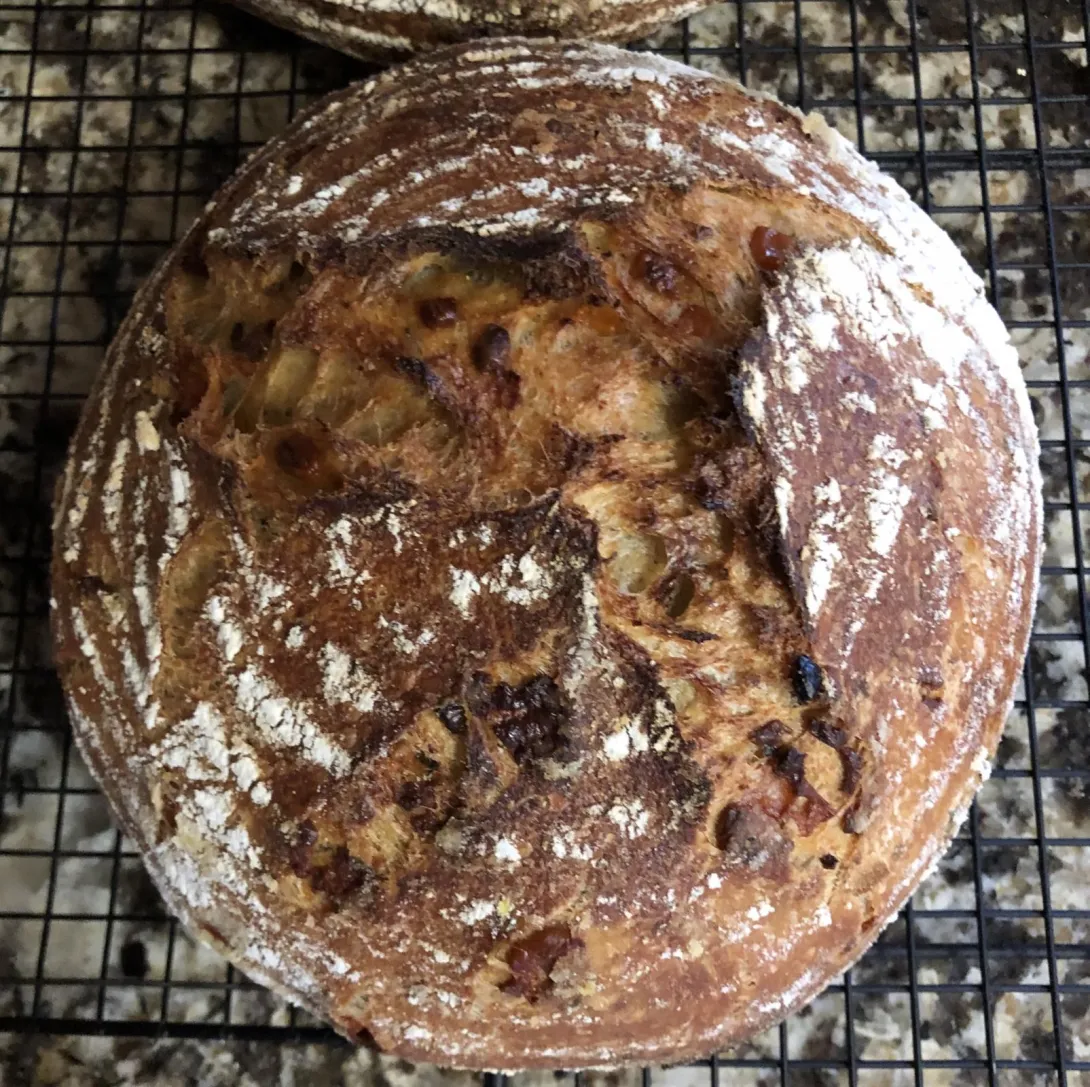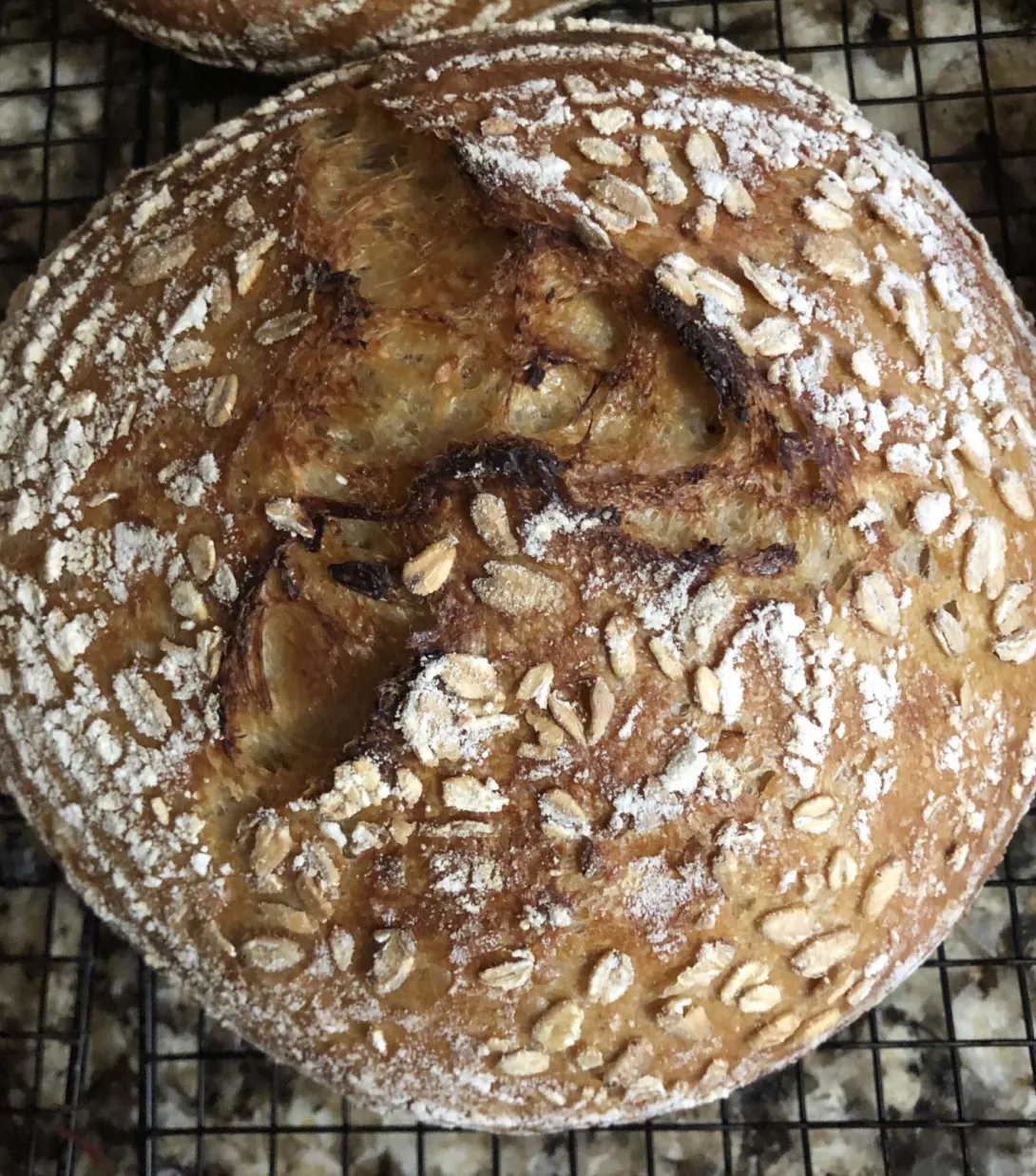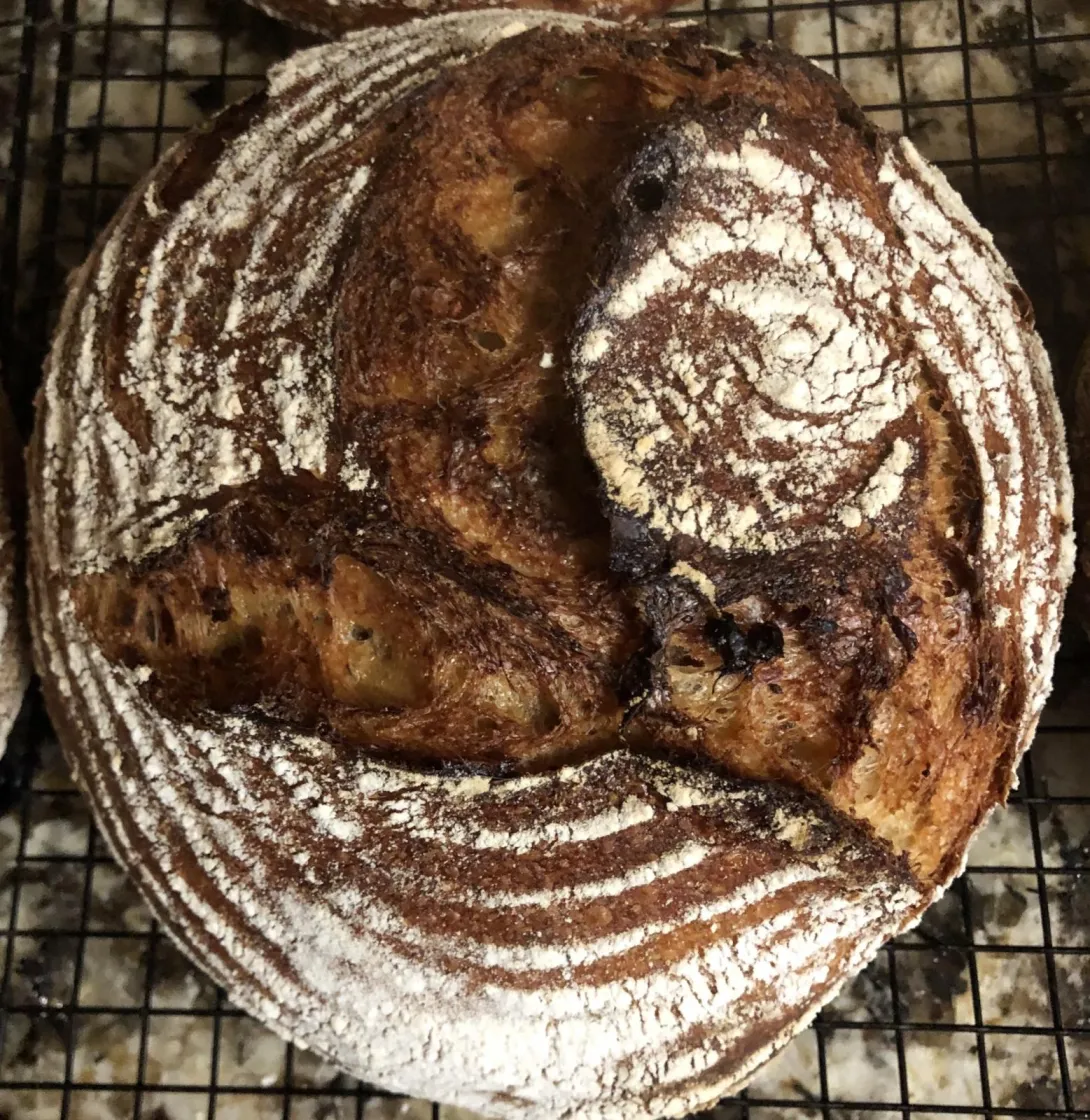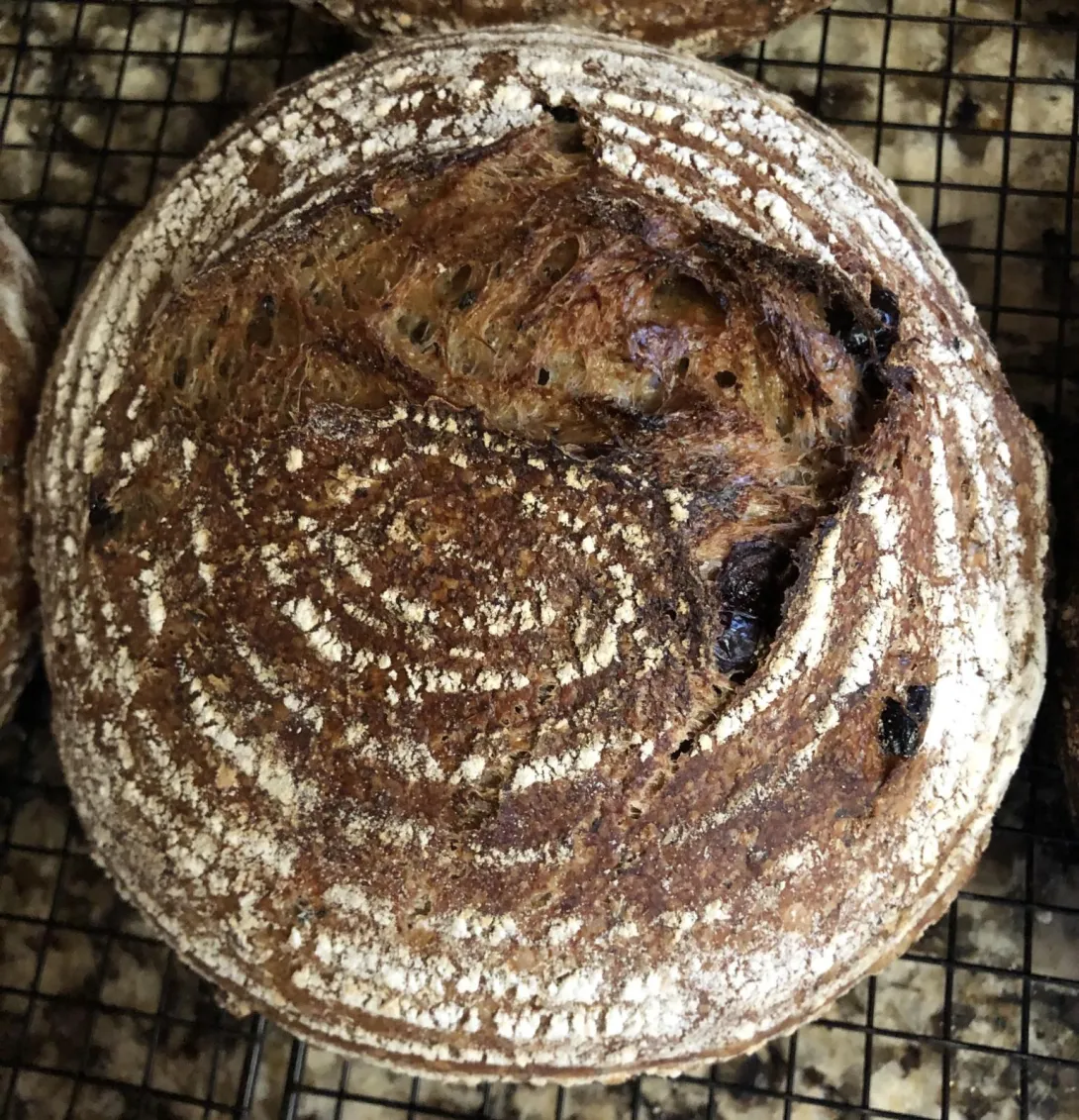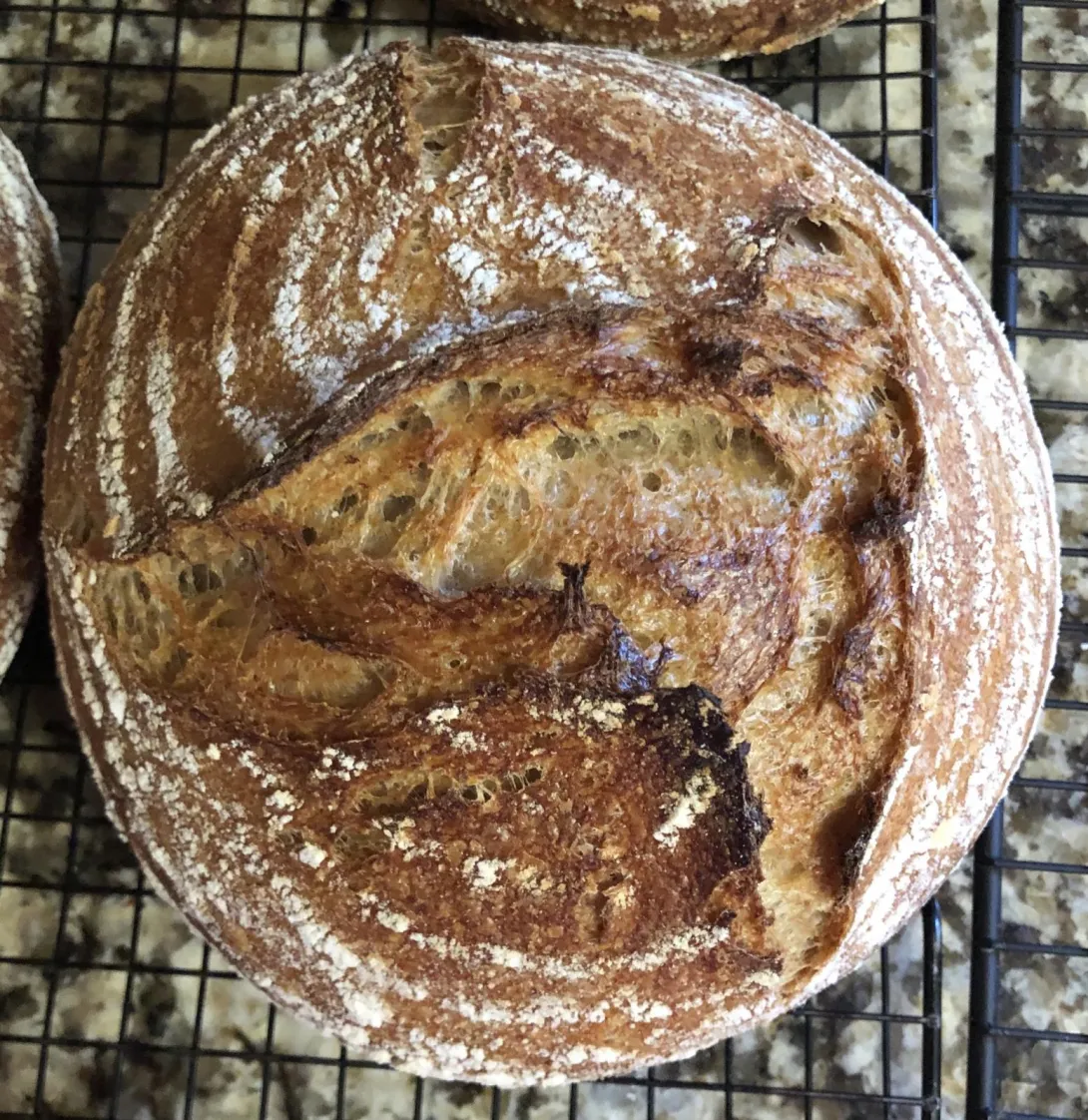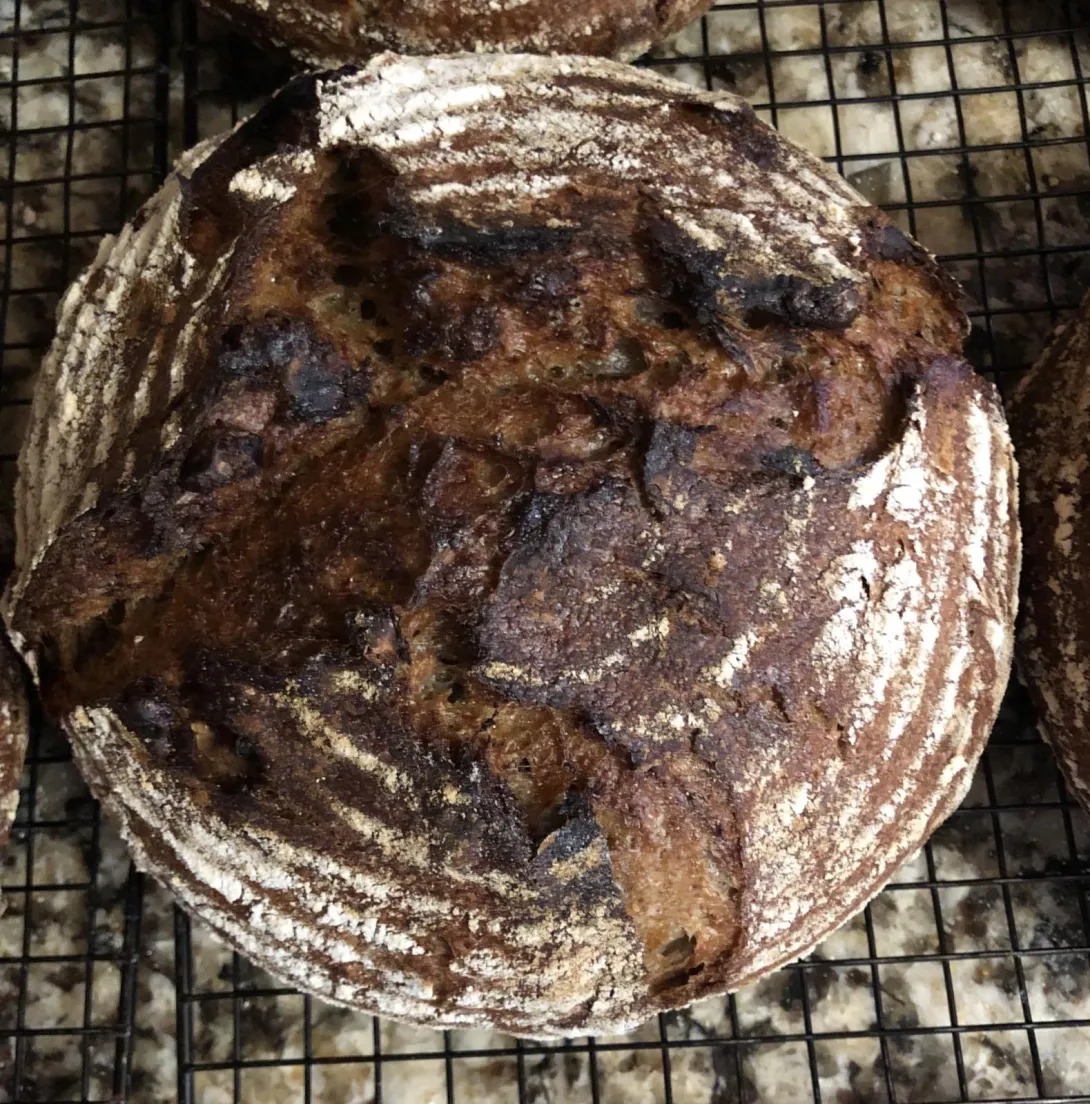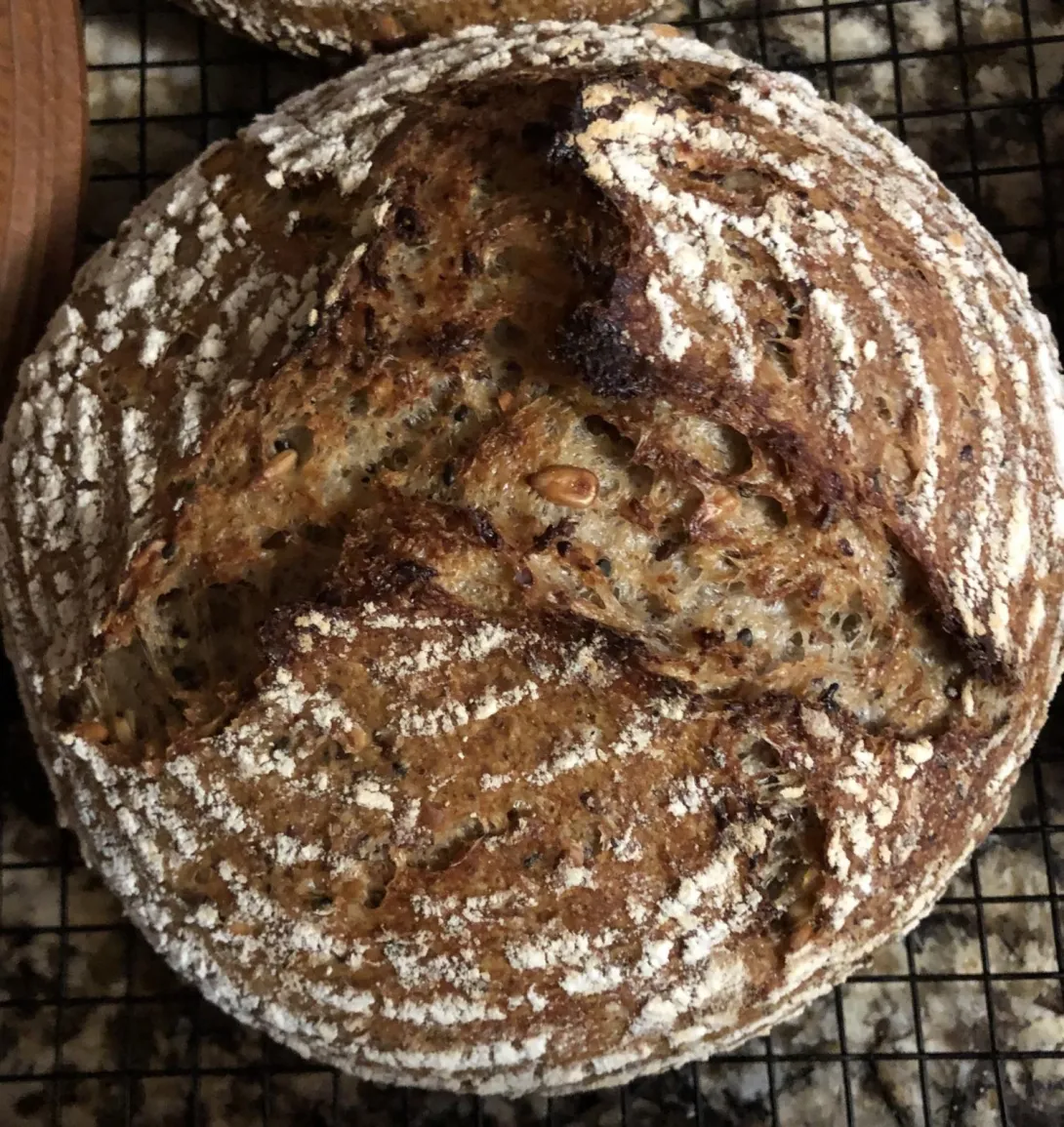40% Selkirk Wheat revisited
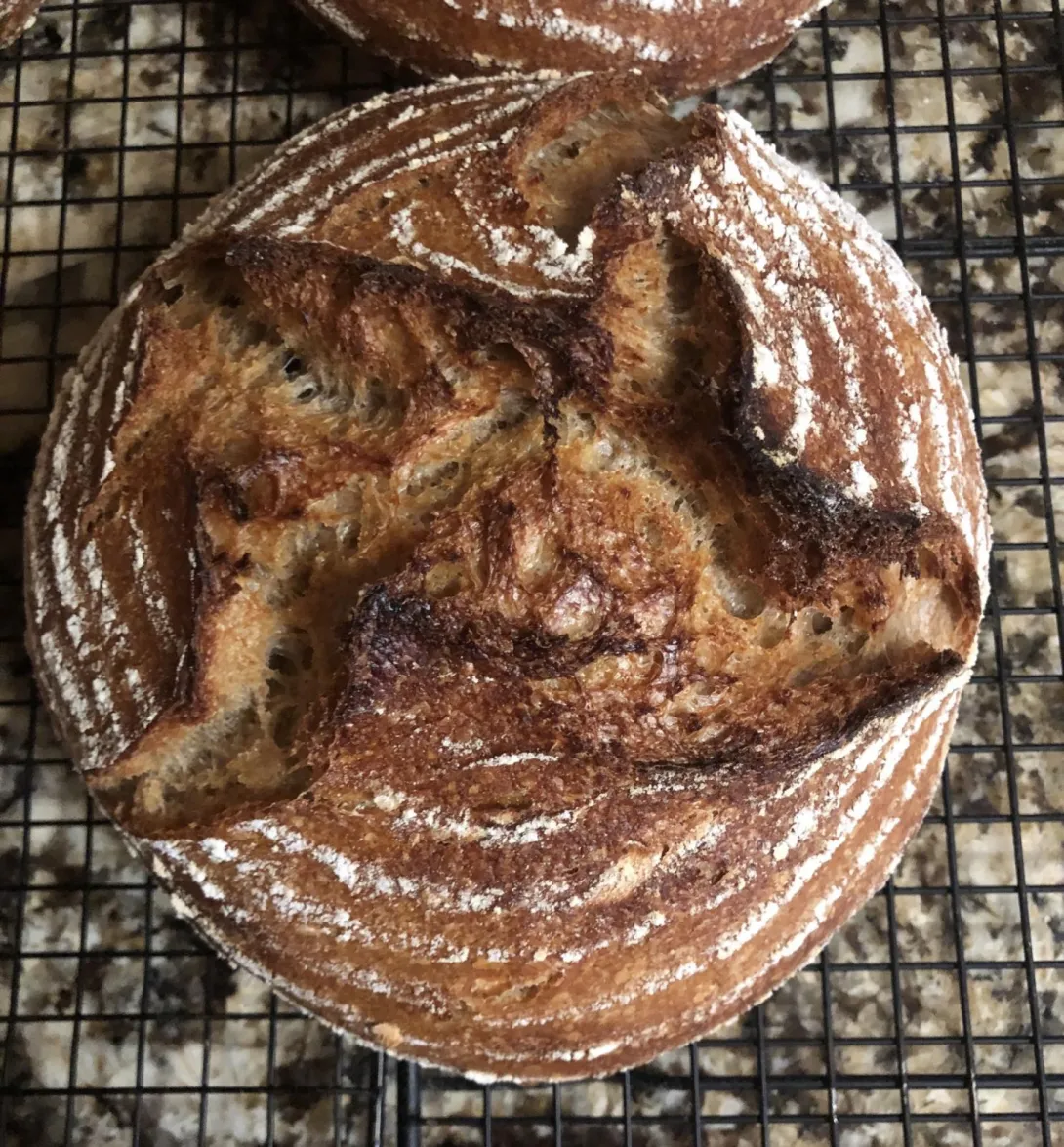
I liked everything about these boules the last time except for their size. They were on the small side so I increased the dough by 10% this time and it did seem a bit better. I think I would go another 10% next time.
By the way, Selkirk wheat is an old wheat from the 50s. I get it at Daybreak Mills. It’s their hard spring wheat.
Recipe
Makes 3 loaves
Ingredients
350 g of freshly milled Selkirk Wheat flour
725 g strong bakers unbleached flour
725 g filtered water
30 g yogurt
23 g pink Himalayan salt
